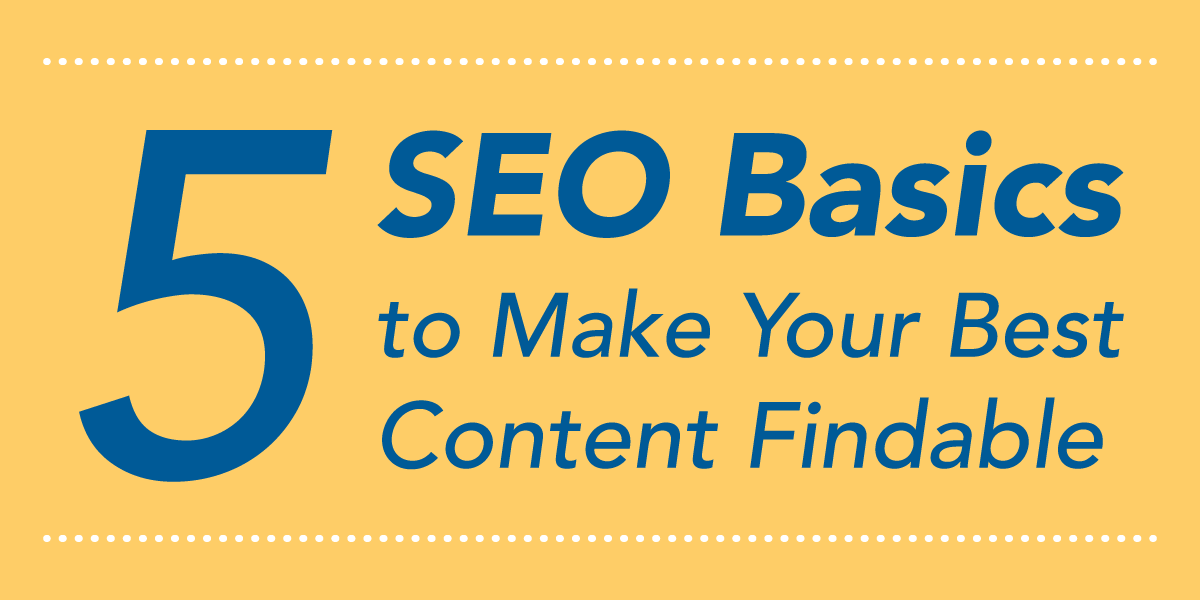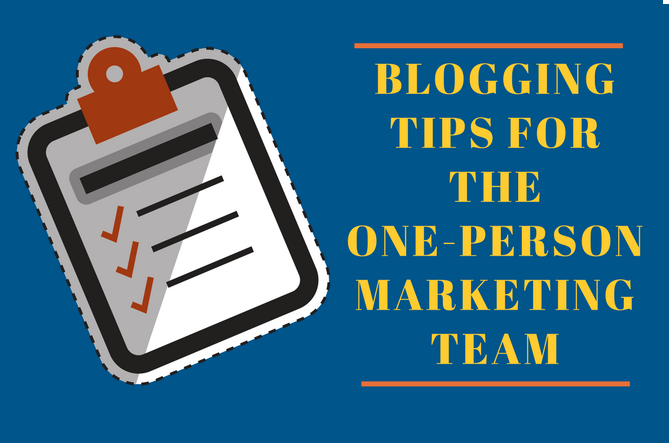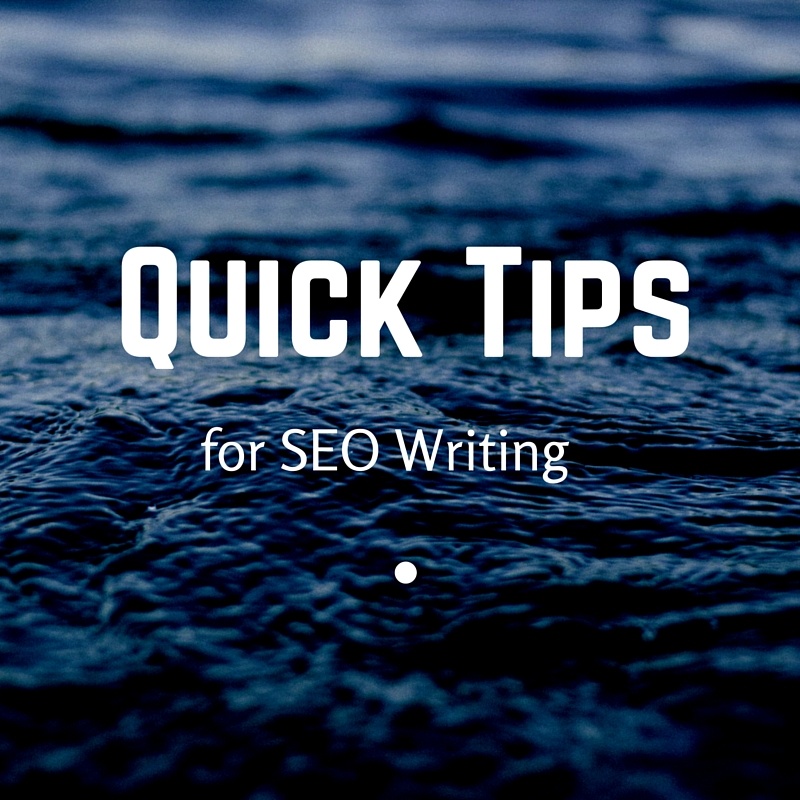Blogging Tips for the One-Person Marketing Team
You know your stuff. You could blog about what you do ‘til the cows come home. The problem is that there's never enough time to do it all well....
4 min read
Pat Heffernan
:
8/26/22 10:00 AM

Whew! You’re exhausted. You’ve just finished a sprint to get your mobile-first site updated after Google’s latest Core Web Vitals algorithm change. But don’t stop now. Despite the page speed performance and mobile-friendly brouhaha, publishing and promoting quality content means remembering for changemakers there’s much more to SEO (search engine optimization) than responsive design.
The foundation of search engine optimization is the quality of your content and the technical aspects of the basic website build. If the writing isn’t solid and useful for your customers and prospects, then SEO tweaks won’t help. If your site design isn’t mobile-friendly, nothing here can overcome that basic flaw. But you, dear reader, have already taken care of ensuring writing and technical quality so let’s focus on how to enhance what you’ve already done.
Regardless of the platform or publishing software you are using — WordPress, HubSpot, Drupal, Joomla, or Rainmaker are popular examples — there are simple steps you can take to enhance the on-page search engine appeal of what you have produced. Consider this your ‘quick and dirty’ SEO essentials checklist. Time is always the greatest challenge for triple-bottom-line businesses and nonprofits, so if you only have 10 minutes to enhance your page or post, here’s how I’d suggest spending your time before you hit publish.
Your page or blog post headline announces the subject you are writing about, and it is what appears on the search engine results page (SERP) as your title. For SEO your headline needs to be 55-70 characters long, including spaces, (or Google will cut it off in the SERP) and it should contain your keywords. Computers read left to right, so if possible, place your keywords at the beginning of the headline, which also needs to be formatted with the H1 tag to identify it as the title for search engines. (That’s title or heading 1 style in MS Word for you writers out there.)
The benefits of a strong headline title include:
Subheads are generally formatted as heading 2 style so the search engines know this is slightly less important content than the title, but still important. A quick scan of the subheads on your page or blog post should outline the story you are telling, and ideally one subhead includes your keyword phrase.
Think of your focus keyword phrase as the exact words you expect your client or persona to actually type into the browser search bar. These days this is usually at least a three-word phrase and more commonly, a five to seven word phrase. (You wrote your article with the keyword phrase in mind, yes?) Ideally now you want to be sure the keyword phrase appears in five places:
The meta description or excerpt is what search engines show underneath the title of your page or post on the SERP, which can determine its ‘clickability.’ Here you are limited to 155-160 characters, including spaces. The meta description gives you a little more space to expand on what your title has promised and ideally it will also contain your keyword phrase or variation. Note though that your excerpt is longer and not an exact repeat of your title.
More than likely your objective for publishing a new page or post includes adding to the magnet site at the hub of your content marketing strategy. The depth of material and connections within your own materials as well as credible outside resources need to be clear. Internal and external links help confirm the semantic relevance of the subject of your article for a particular search phrase. I generally seek a minimum of three links for a new blog post, for example: one internal link to another blog post on the same blog; one external link to another website owned by or related to the post publisher or a values-based partner; and a third link to a credible external resource without on-site advertising. (Affiliate links do not count.) Choosing your external links
Thankfully, there’s no length restriction for image alt tags. (Alt tag identifies alternative text used to describe the nature or content of an image if a user cannot view it because of a slow connection or use of a screen-to-text reader.) There’s no need to write an epistle, but your objective is to describe the context (using your keyword phrase) as well as the image itself so your page or post is accessible and inclusive for all potential visitors.
As an example, here is the alt tag for the featured image at the top of this post:
You’ll note this ‘quick and dirty’ SEO essentials checklist is intended to be just that. (There are tons of technical tomes and specialized services out there on how to write the best headlines or how to do keyword research.) But after an initial website build or redesign of the quality content you've been producing over the years, you can be facing a major SEO effort that will be time-consuming or expensive. Such a full-scale SEO effort is necessary and warranted for an e-commerce site, but may not pay back an incremental return for a new blog or information site for a nonprofit or small values-based business. If you and your team take care of these 5 SEO basics for every new article you publish as well as your most important ‘evergreen’ content, SEO for your mobile-friendly site will pay back by reaching more people with the quality content you are producing.
SEO Basics for Small Business Owners, Forbes
Non-profit’s Guide to SEM, by SEObook
The Beginner’s Guide to SEO, from Moz [pdf]
Search Engine Optimization Starter Guide, from Google [pdf]
----------
Editor's Note: This post was originally published in 2015 and has been updated for freshness, accuracy, and comprehensiveness. Most recent update August 26, 2022.

You know your stuff. You could blog about what you do ‘til the cows come home. The problem is that there's never enough time to do it all well....

I've ben around long enough to remember when terms like "SEO" and "writing" didn't appear together in the same sentence. This is one of the...
![Seven important steps to launch your new website [checklist]](https://www.marketing-partners.com/hubfs/BLOG/08-August-2019/Dave_MPI%20Blog%20Post_8-22-19.jpg)
As the website owner, you want to be sure your investment in developing a new website is going to improve your brand awareness and return on your...